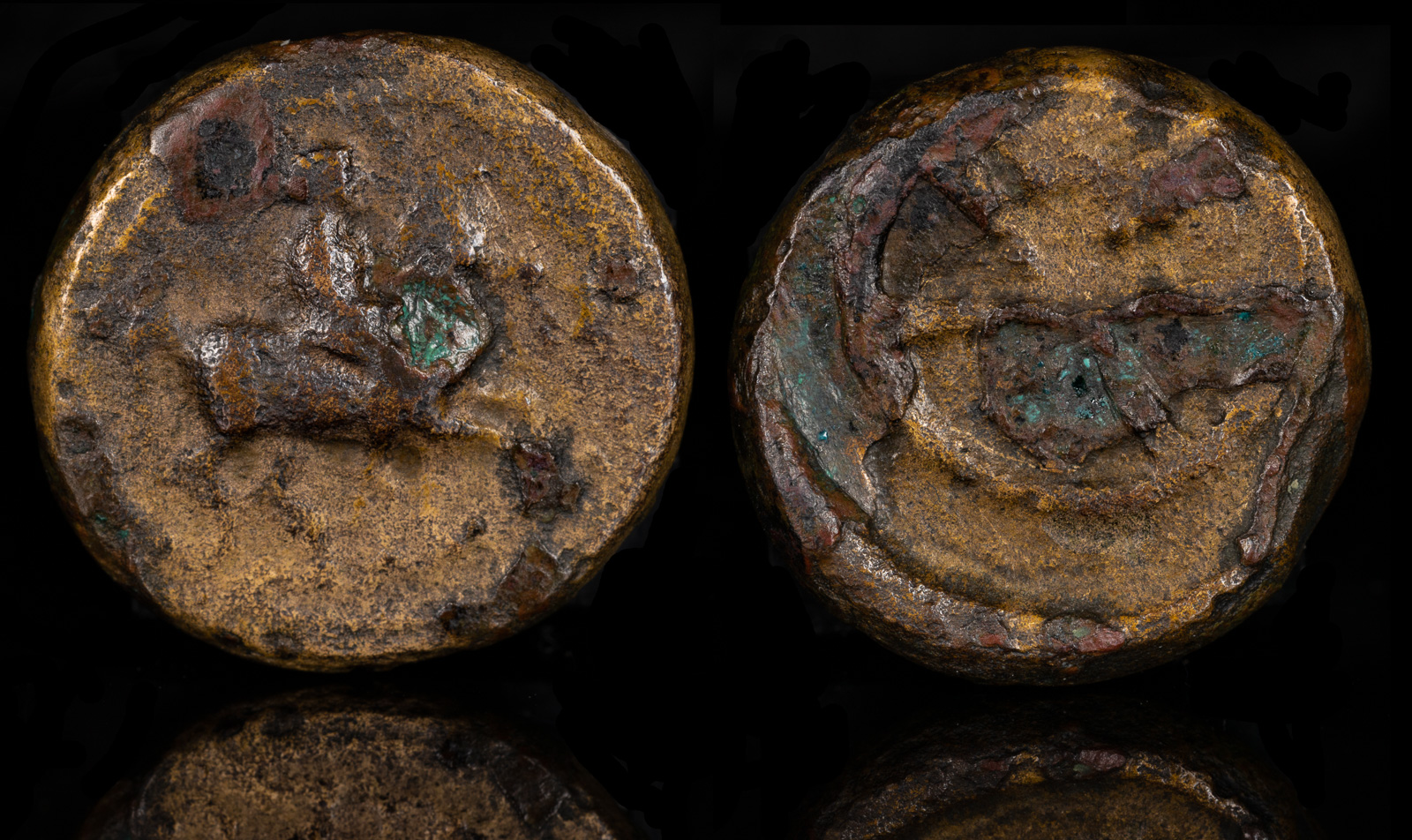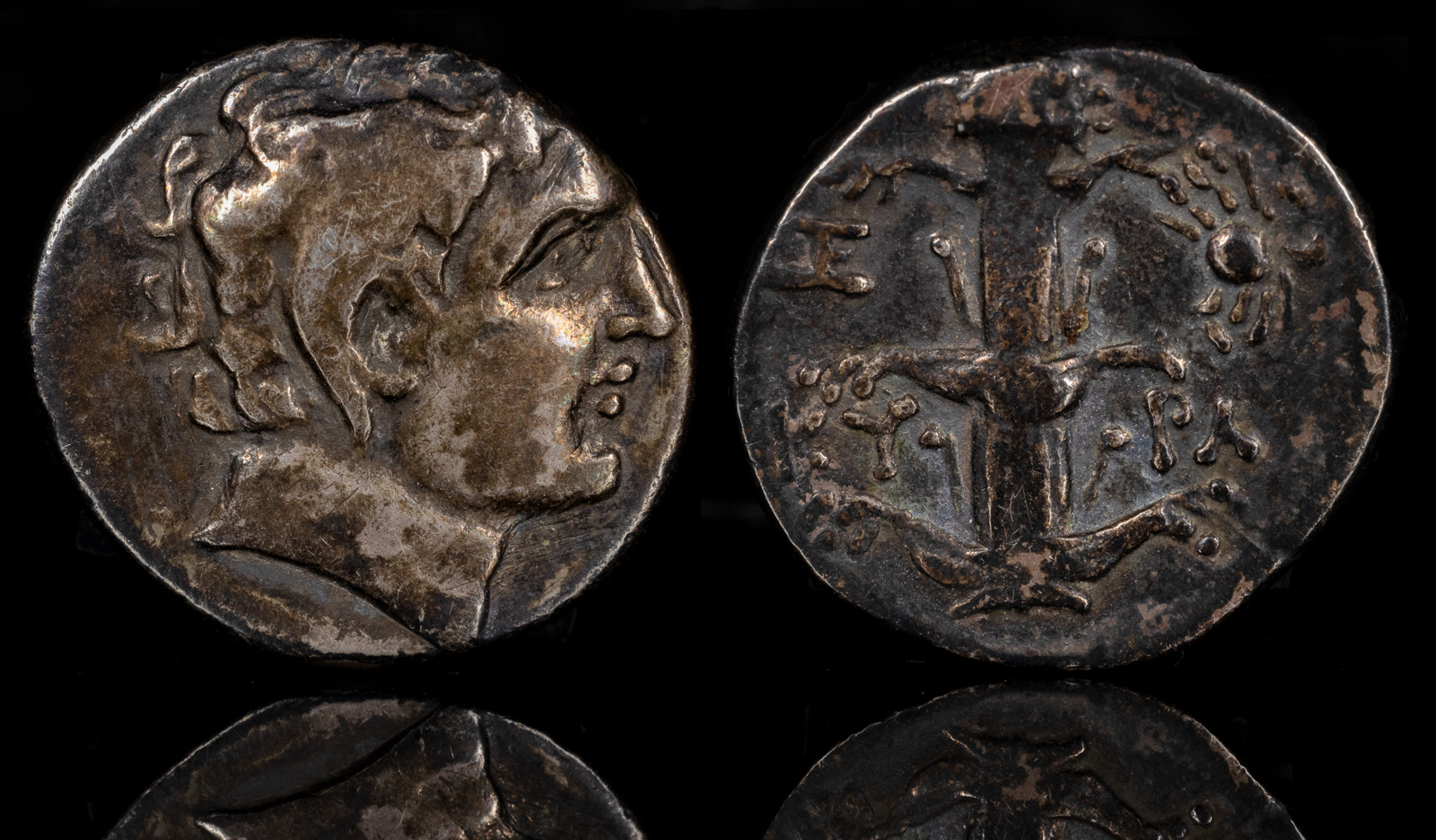
322-313 BCE
18.58mm 7.26 grams
Obverse: Youth on horseback right
Reverse: Wheel with four spokes and hub, silphium plant between left spokes
SNG Copenhagen 1221
Ex Marc Breitsprecher
Kyrene has a rather odd founding story. It was orignally settled by Grinos, king of Thera (now Santorini), who consulted the Oracle at Delphi on how to address a severe drought. The Oracle replied to found a new city in Libya.
However, Grinos wasn’t the smartest tool in the shed, so he went back to Thera because he didn’t understand the Oracle. The drought continued and he went back to the Oracle for advice, and was again told to found a city in Libya.
Grinos didn’t know where Libya is, so he found a guy on Crete who knew and they founded a colony on an island off the shore of Libya, but the drought continued. Again Grinos visited the Oracle and this time she said that he was a dumb-ass and she had specifically told him to create his city in Libya and not on an island off the coast. So, he finally obeyed her instructions, created a colony in Aziris, and six years later that colony was moved to the superior location of Kyrene, by which time the drought had ceased.
What I find far more fascinating about this coin is not the person, but what’s depicted. It’s an ancient plant called Silphium, which most believe is now extinct.

Ptolemaic governor, c. 300-282/75 BC
AR Didrachm 20mm, 7.30g, 12h
Head of Karneios r. R/ Silphion plant; ZE monogram to upper l., crab to upper r., KY-PA across lower field.
BMC 256; cf. SNG Copenhagen 1243
Easily the most valuable plant at the time, it transformed Kyrene from a backwater to one of the richest cities in the Mediterranean. The list of capabilities is impressive: a contraceptive and abortifacient. Cures a soar throat, fever, warts, and more. Used as a seasoning and perfume. When eaten by goats, it makes the meat incredibly tender.
What I wonder today is whether silphium was just a “craze”, akin to the Dutch tulip madness, or whether it was truly a remarkable weed. Sadly, it went extinct during the time of the 12 Caesars, so we’ll probably never know. Theories on its demise range from overgrazing to desertification to “it’s still around.”
So important was silphium to Kyrene’s economy (it only grew there), that many of its coins feature the plant. This one displays the stalk, bloom(?) at the top, and a crab.
My suspicion is the crabs had something important to do with the plant. Its seeds were supposedly shaped like hearts, and many believe the plant’s association with fertility and use as a contraceptive gave our current heart shape its form. My suspicion is silphium as a species no longer exists. Given that it was traded as far as India (and maybe beyond?), had it grown somewhere else, someone back then would have noticed. What I do wonder, though, is would our world be a bit different were it still to exist? Could it have cured cancer? Was it actually an effective contraceptive? Would our top steaks today involve silphium? Or, was the whole thing blown out of proportion?